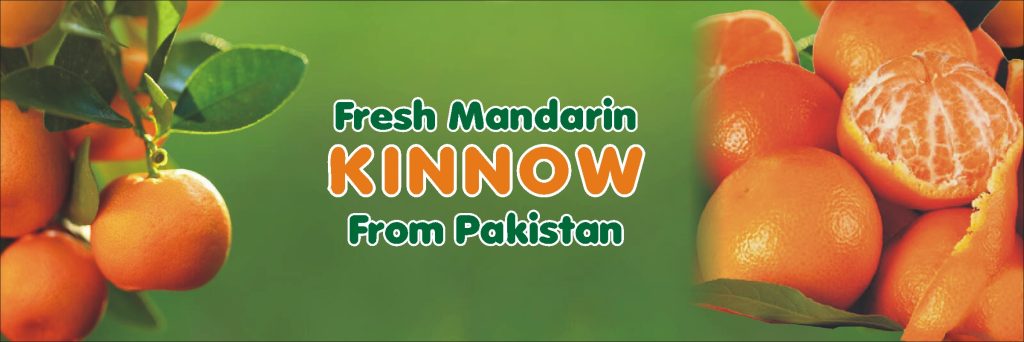
Best Quality Orange "Kinnow" Mandarin from Pakistan
BILAL ENTERPRISES procures Pakistan kinnow and Pakistan mandarin from high quality kinnow plantations in order to achieve the highest quality standards, and a quality check is done at the farms prior to transferring the fruit to the processing unit. Kinnow and Mandarin from Pakistan are really tasty and are considered very healthy. There are many benefits of kinnow, and some of the kinnow fruit benefits are that they are a rich source of vitamins, minerals, and dietary fibre. As leading kinnow exporters from Pakistan, we ensure that we supply the best quality kinnow and Mandarin.
BILAL ENTERPRISES is one of the leading exporters and suppliers of Pakistan citrus kinnow and Pakistan juicy orange “kinnow” . We supply Orange “kinnow” and mandarin from Pakistan to most part of the world mainly including United Arab Emirates (Dubai), Qatar, Saudi Arabia, Iraq, Indonesia, Malaysia, Afghanistan, Uzbekistan and Russia. We thrive on achieving and becoming top fresh kinnow suppliers and kinnow exporters from Pakistan.
PROCESSING
The major scope of processing activities includes post-harvest sorting, washing, waxing, drying, grading, packing, and logistics. The produce is brought to the kinnow processing plant, where it is washed, waxed, dried, graded, packed, and Labelle in the processing plant.

HARVESTING
- Timing
- Harvesting Kinnow mandarins is typically done in winter, usually from December to February, when the fruit is ripe and reaches its peak flavor. However, the exact timing can vary depending on the climate and specific variety of Kinnow being cultivated.
- Visual Inspection
- Experienced farmers and orchard workers visually inspect the fruit to determine its ripeness. Ripe Kinnow mandarins are bright orange in color and should have a slightly glossy appearance. They should be firm yet slightly soft to the touch. Additionally, the characteristic aroma of ripe citrus indicates their readiness for harvest.
- Fruit Picking Techniques
- Special care is taken while picking and cutting the fruit to prevent damage. Orchard workers usually use pruning shears or sharp knives to cut the fruit from the tree. It’s essential to leave a small piece of stem attached to the fruit (known as a stem or “button”) to prolong its shelf life and prevent fungal infections.
Handling
Kinnow mandarins are delicate fruits, so they should be handled with care to avoid bruising and damage. Workers gently place the harvested fruits into containers or baskets, ensuring they are not stacked too high to prevent crushing.
POST HARVEST TREATMENT
- Sorting by Size:
- Kinnow mandarins are sorted into different size categories. Common size categories include extra-large, large, medium, and small.
- Color Grading:
- Fruits are graded based on their color. Ripe Kinnow mandarins are bright orange in color. Fruits with consistent, vibrant orange hues are considered higher quality and are sorted separately from fruits with blemishes or uneven coloring.
ORCHARD TO PROCESSING PLANT
- Stored Kinnow mandarins are transported to processing plat for further maintain the fruit’s quality. Orchard managers to ensure that the harvesting process is carried out efficiently and swiftly to deliver fresh, high-quality at Processing Plant.
- Washing and waxing are essential post-harvest treatments for Kinnow mandarins. These processes help improve the fruit’s appearance, remove dirt and residues, enhance shelf life, and protect the fruit during transportation.
WASHING
- Water Bath:
- Kinnow mandarins are often washed in a water bath or conveyor system to remove dirt, dust, and residues. The water bath may contain mild disinfectants to reduce the risk of fungal and bacterial contamination.
- Brushing:
- In some processing facilities, the fruits go through rotating brushes or soft bristle rollers. This mechanical action helps remove stubborn dirt and residues from the fruit’s surface.
- Rinsing:
- After washing and brushing, the fruits are thoroughly rinsed with clean water to remove any remaining cleaning agents or residues from the surface.
WAXING
- Drying:
- After washing, the Kinnow mandarins are air-dried or passed through a drying tunnel to remove excess moisture from the surface. Proper drying is essential for effective wax adhesion.
- Wax Application:
- Food-grade waxes, often based on natural ingredients are applied to the surface of the dried fruits. This wax provides a protective coating, enhances the fruit’s appearance, and helps maintain moisture levels.
- Buffing or Polishing:
- In some cases, the waxed fruits are passed through brushes or rollers that gently buff and polish the waxed surface, giving the fruits a shiny appearance.
- Quality Control:
Quality control personnel inspect the waxed Kinnow mandarins to ensure that the wax coating is uniform, without any irregularities. They also check for any damaged or unacceptably blemished fruits that might have passed through the process.
GRADING
Grading is an essential step in the post-harvest process of Kinnow mandarins, as it ensures that the fruits meet certain quality standards for market sale. Grading involves sorting the Kinnow mandarins based on various characteristics such as size, color, shape, and overall quality. Here are the typical steps involved in Kinnow grading.
Sorting by Size
Kinnow mandarins are sorted into different size categories. Common size categories include extra-large, large, medium, and small. This sorting helps in packaging fruits of similar sizes together, providing uniformity in each package.
Color Grading
Fruits are graded based on their color. Ripe Kinnow mandarins are bright orange in color. Fruits with consistent, vibrant orange hues are considered higher quality and are sorted separately from fruits with blemishes or uneven coloring.
Shape and Uniformity
Kinnow mandarins should have a uniform shape, free from deformities or irregularities. Fruits that are misshapen or damaged are typically separated during the grading process.
Quality Inspection
Graders inspect each fruit for quality. This includes checking for blemishes, bruises, cuts, and other defects. Only fruits that meet the desired quality standards are selected for packaging.
Removing Defective Fruits
Any fruits that do not meet the quality criteria are removed from the grading line. These defective fruits may be used for other purposes, such as processing or juicing.

PACKING
After grading, Kinnow mandarins are carefully packed into appropriate packaging materials such as cartons or crates. Proper cushioning and ventilation are provided to prevent damage during transportation. Proper packaging and storage are crucial to maintaining the freshness, quality, and shelf life of Kinnow mandarins. Here are some guidelines for packaging and storage:
Cartons or Crates
5KG, 7KG, 10KG, and 13KG of corrugated box, plastic baskets, and wooden boxes. The buyer’s specific requirements can also be entertained .Kinnow mandarins are typically packed in sturdy, clean, and well-ventilated cartons or crates. These containers should be of high quality to prevent damage to the fruits during transportation.
Cushioning
To prevent bruising and damage, fruits are often cushioned with soft materials like foam pads or paper shreds within the cartons.
Sizing
Fruits are sorted and packed according to their size to ensure uniformity within each package.
Labeling
Each package should be properly labeled with information such as fruit variety, origin, packing date, and any other relevant details.
